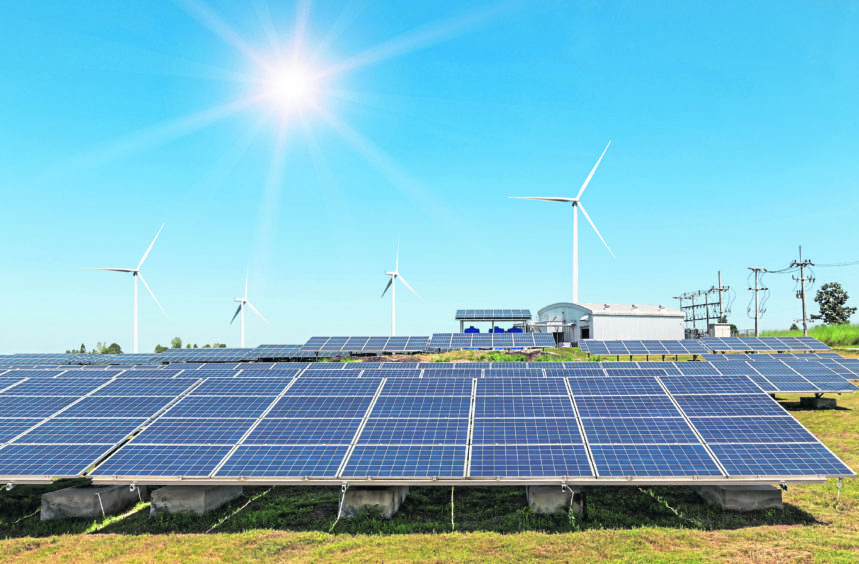
Sweden is fighting a draft European climate measure that it says could harm its world-beating green bond market.
The European Commission, which wants to steer investors to socially and environmentally sustainable assets, is proposing that only buildings certified as super-energy efficient by national authorities be included in its taxonomy. Being excluded would make financing more expensive.
But national energy requirements differ and since Sweden imposes some of Europe’s toughest, the EU’s framework would ultimately dramatically shrink the pool of Swedish assets that could be funded with green bonds.
The Swedish Bankers’ Association says the fallout could leave just 1% of the total eligible, compared with as much as 20% in other countries.
Sweden isn’t alone in opposing the draft definition, but it would be among the hardest hit.
“The requirements for energy classes differ significantly between member states,” Swedish Financial Markets Minister Per Bolund said in an email. “The effect of this is a very heterogeneous classification of buildings and lack of transparency.”
Challenges
The EU estimates that about a third of the region’s greenhouse gases stem from building construction, use, demolition and renovation. It has proposed defining as sustainable those buildings that get a so-called energy performance certificate A level. EPCs were first introduced in 2002 with the EU’s first Energy Performance of Buildings Directive.
According to Jonathan Volt and Zsolt Toth at the Buildings Performance Institute Europe, the certificates could help drive green investment. But the lack of common criteria for setting levels presents “some challenges,” not least for Nordic countries, they said.
“On average these countries have tougher building regulations and EPC A thresholds, which means that the benchmark for what is being considered ‘sustainable’ or ‘green’ will also become more difficult to reach,” Volt and Toth said in an email.
Short Stick
Meanwhile, Swedish companies and municipalities issuing more green debt than their counterparts elsewhere in Europe. Last year, krona-denominated green bonds accounted for 20% of total issuance, which represents a far larger share than in the euro, U.S. and U.K. markets, according to Sweden’s central bank.
And in the nine months through September, securities worth about 82 billion kronor ($10 billion) were sold, putting the market on track to beat 2019’s 91 billion-krona record.
“We pretty much drew the short stick here,” said Helena Lindahl, a portfolio manager at Storebrand Asset Management who’s part of a fixed-income team managing around $18 billion. “I sincerely hope that the issuers will continue to issue green bonds, that this doesn’t put a halt to what we’ve accomplished over the past 10 years.”
Close to half of Sweden’s corporate green debt has been offered recently by its real estate companies, followed by banks. Local municipalities too are becoming big issuers.
Taxonomy
“The current design of the taxonomy is highly problematic,” said Bjorn Bergstrand, head of sustainability for Kommuninvest, which issues bonds on behalf of local governments. “The technical screen criteria mean that quite a large share of the portfolio would be excluded.”
The proposal’s effect isn’t immediate. The commission was taking comments until Dec. 18, and the measure now needs parliamentary approval and national implementation.
Swedish issuers can still offer securities that meet other global green-bond framework requirements, so they’re by no means cut off from the market.
Still, longer term, investors are likely to take their lead from the EU, said Johan Hansing, chief economist at the Swedish Bankers’ Association.
“We don’t really understand how they can harmonize the definition of a green building based on a classification that is not harmonized,” Hansing said. “If this new taxonomy would be the rule, the market for green mortgage loans would decrease very much.”
One reason Sweden’s green bond market has grown quickly is because earlier discussions about the building requirements suggested the commission would adopt a definition of sustainable as the 15% most energy efficient buildings in a country. In a surprise move, it replaced that criteria in November with the EPC A level certification.
“Fifteen percent of an entire market in transition is quite a low number as it is,” Lars Mac Key, head of sustainable bonds at Danske Bank, said. “Now we’re just pushing into January when the EU taxonomy should be in play, and we get a delegated act that says we’re looking at EPC A which is quite a dramatic change.”
Swedish banks today use energy classification A and B, and some banks also use C as a criterion for green mortgage loans, Hansing said.
“It’s tougher to get an A classification in Sweden than in other countries, and the result is that this proposed taxonomy will hurt us more than others,” he said.
Sweden isn’t the only country opposing the definition. FinansDanmark, the trade group representing Denmark’s finance industry, says it’s urging the commission to go back to its earlier threshold of 15%.
Otherwise, “the number of green buildings in Denmark will fall significantly,” Peter Jayaswal, head of mortgage financing, said. Countries with the toughest demands “will be hit the hardest by the tightening.”
The building threshold is among several parts of the proposed taxonomy that Nordic countries say undermine their efforts to address climate change, including investments in bio-mass and hydropower.
Storebrand “will continue to promote and buy green bonds that are aligned with the green bond principles,” Lindahl said. “We’ll figure out how we will handle the taxonomy, because we can’t stop. We don’t have time to stop.”
